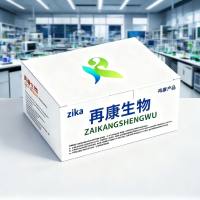Detection of TiO2 Nanoparticles in Cells by Flow Cytometry
互联网
332
Evaluation of the potential hazard of man-made nanomaterials has been hampered by a limited ability to observe and measure nanoparticles in cells. A FACSCalibur™ flow cytometer was used to measure changes in light scatter from cells after incubation with TiO2 nanoparticle. Both the side scatter and forward scatter changed substantially in response to the TiO2 . Between 0.1 and 30 μg/mL TiO2 , the side scatter increased sequentially while the forward scatter decreased, presumably due to substantial light reflection by the TiO2 particles. At the lowest concentrations of TiO2 (0.1–0.3 μg/mL), the flow cytometer apparently could detect as few as 5–10 nanoparticles per cell as shown using dark field microscopy. The influence of nanoparticles on the cell cycle was detected by nonionic detergent lysis of nanoparticle-incubated cells. Viability of nanoparticle-treated cells was determined by PI exclusion.
These data suggest that the uptake of nanoparticles within cells can be monitored using flow cytometry and confirmed by dark field microscopy. This approach may help fill a critical need to assess the relationship between nanoparticle dose and cellular toxicity. Such experiments could potentially be performed quickly and easily using the flow cytometer to measure both nanoparticle uptake and cellular health.









